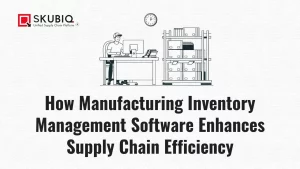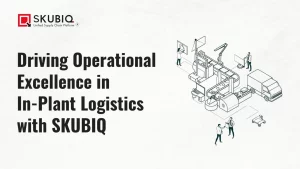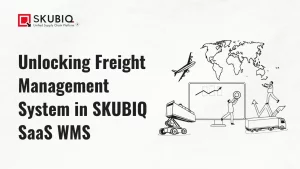Warehouses serve as crucial hubs in the supply chain, facilitating the storage and movement of goods from manufacturers to consumers. To optimize warehouse operations, it’s essential to understand the functions of warehouse and equip them accordingly. In this article, we delve into the four primary functions of warehouses and the equipment required to support them effectively.
1. Storage
The primary function of any warehouse is storage. Warehouses act as temporary homes for goods before they are distributed to their final destinations. Effective storage management is key to maximizing warehouse space and ensuring efficient operations. To support this function, warehouses require various types of storage equipment, including:
Pallet Racks:
Pallet racks are essential for storing goods on pallets, maximizing vertical space within the warehouse. They come in various configurations, such as selective racks, drive-in racks, and push-back racks, allowing warehouses to tailor their storage solutions to their specific needs.Shelving Units:
Shelving units are ideal for storing smaller items that cannot be palletized. They provide easy access to goods and are often used for storing inventory that needs to be picked frequently.Mezzanine Floors:
Mezzanine floors are intermediate floors installed between the main floors of a warehouse, effectively doubling the available storage space. They are particularly useful for warehouses with limited floor space but high vertical clearance.2. Sorting and Order Fulfillment
Once goods are stored in the warehouse, the next function is sorting and order fulfillment. This involves retrieving goods from storage and preparing them for shipment to customers. To support efficient sorting and order fulfillment processes, warehouses require the following equipment:
Conveyor Systems:
Conveyor systems are used to transport goods within the warehouse, minimizing manual handling and streamlining the sorting process. They come in various configurations, including roller conveyors, belt conveyors, and gravity conveyors, allowing warehouses to customize their conveyor systems based on their needs.Pick and Pack Stations:
Pick and pack stations are designated areas where workers pick items from shelves or pallets and prepare them for shipment. These stations are equipped with packing materials, such as boxes, tape, and packing slips, to facilitate efficient order processing.Barcode Scanners:
Barcode scanners are essential for tracking inventory and verifying orders during the picking and packing process. They help reduce errors and improve accuracy in order fulfillment, ensuring customers receive the correct items on time.3. Inventory Management
Inventory management is a critical function of warehouses, involving the tracking and control of stock levels to prevent stockouts and overstock situations. To effectively manage inventory, warehouses rely on sophisticated inventory management systems that integrate with their storage and order fulfillment processes. Key equipment and technologies used for inventory management include:
Warehouse Management Systems (WMS):
WMS software is designed to optimize warehouse operations by automating inventory management tasks such as stock tracking, replenishment, and order allocation. WMS systems provide real-time visibility into inventory levels and help warehouse managers make data-driven decisions to improve efficiency.Barcode Labels and RFID Tags:
Barcode labels and RFID tags are affixed to individual items or pallets to track their movement within the warehouse. These technologies enable warehouses to accurately identify and locate inventory, reducing the risk of stockouts and ensuring timely replenishment.Inventory Control Devices:
Inventory control devices, such as handheld scanners and mobile devices, allow warehouse staff to conduct inventory counts and updates on the go. These devices connect to the warehouse management system, providing real-time inventory data and facilitating efficient stock management.4. Warehouse Optimization
The final function of warehouses is optimization, which involves continuously improving processes and maximizing efficiency to reduce costs and enhance customer satisfaction. Warehouse optimization requires a combination of data analysis, process refinement, and investment in advanced technologies. Key equipment and strategies for warehouse optimization include:
Warehouse Slotting Software:
Warehouse slotting software analyzes historical data and order patterns to optimize the placement of goods within the warehouse. By strategically slotting items based on their popularity and picking frequency, warehouses can minimize travel time and labor costs, improving overall efficiency.Automated Guided Vehicles (AGVs):
AGVs are robotic vehicles that are used to transport goods within the warehouse without the need for human intervention. These autonomous vehicles follow predefined paths and can be programmed to perform various tasks, such as picking, packing, and replenishment, reducing reliance on manual labor and increasing throughput.Predictive Analytics:
Predictive analytics uses advanced algorithms to forecast future demand and optimize inventory levels accordingly. By analyzing historical sales data, seasonal trends, and market dynamics, warehouses can anticipate fluctuations in demand and adjust their inventory strategy to prevent stockouts and minimize excess inventory.In conclusion, warehouses play a crucial role in the supply chain, performing functions such as storage, sorting and order fulfillment, inventory management, and optimization. To support these functions effectively, warehouses require a range of equipment and technologies, including pallet racks, conveyor systems, inventory management systems, and warehouse slotting software. By investing in the right equipment and implementing best practices, warehouses can streamline operations, reduce costs, and deliver superior service to customers.



